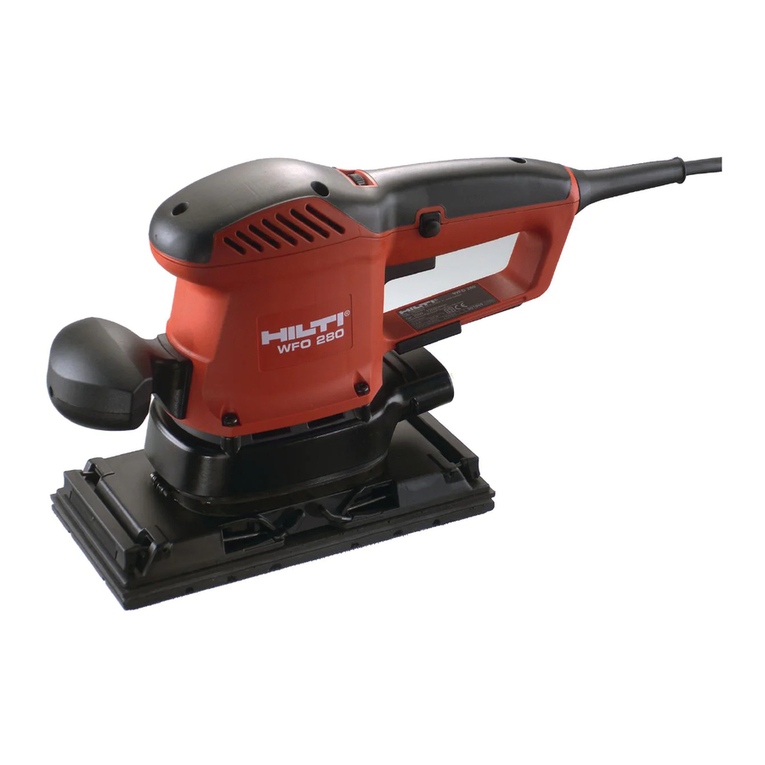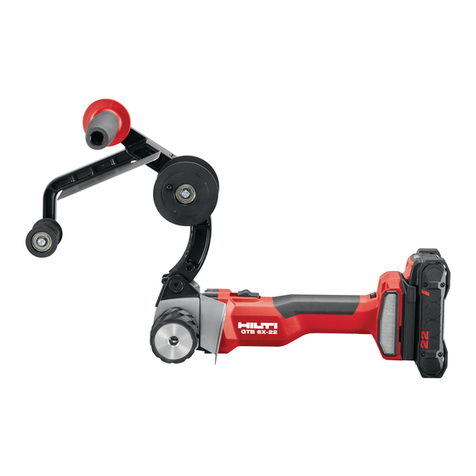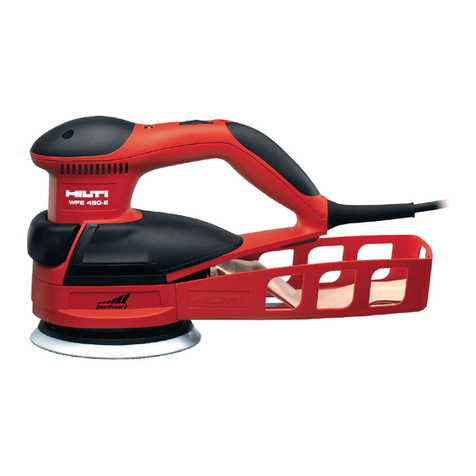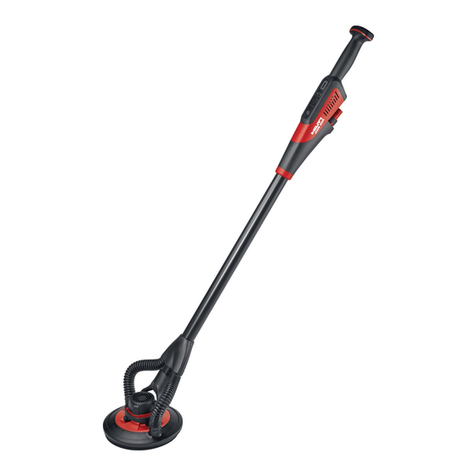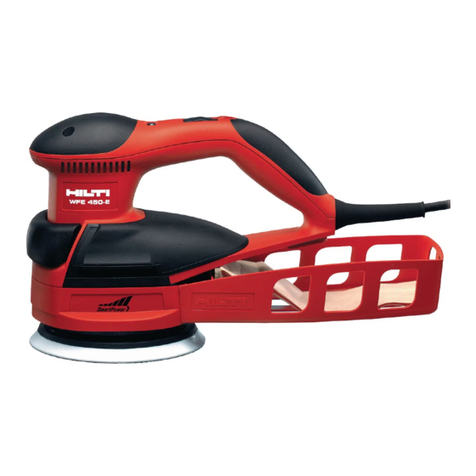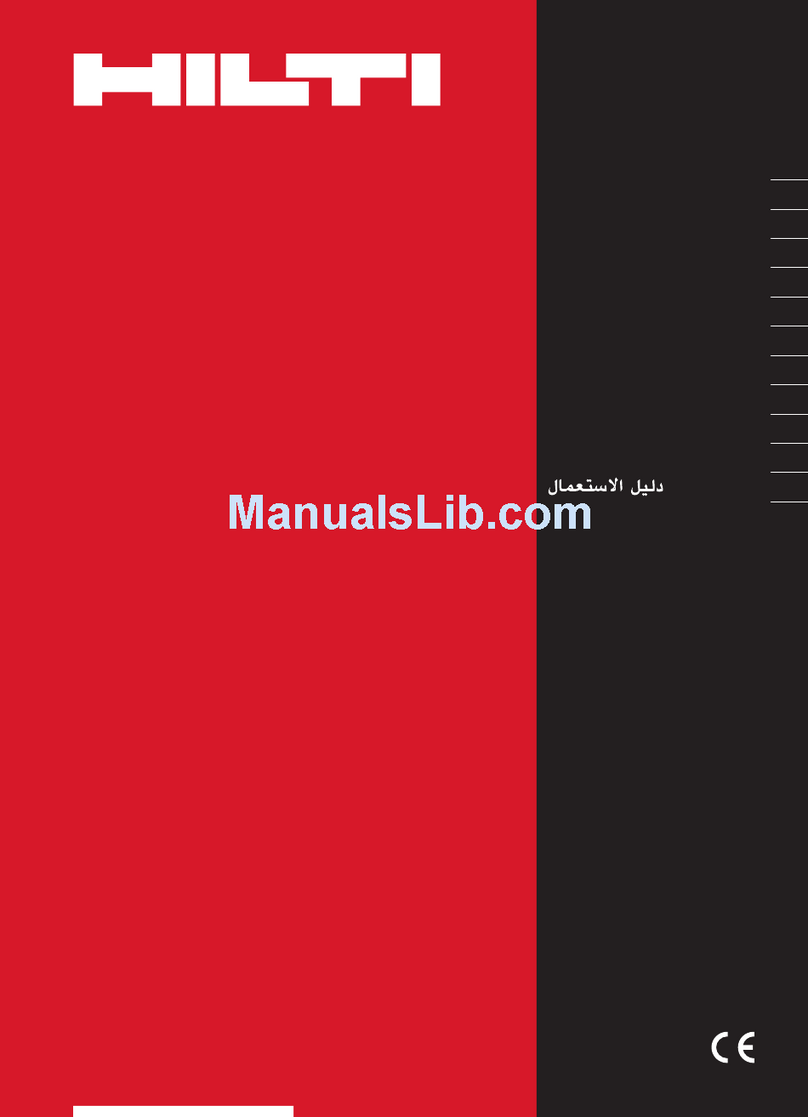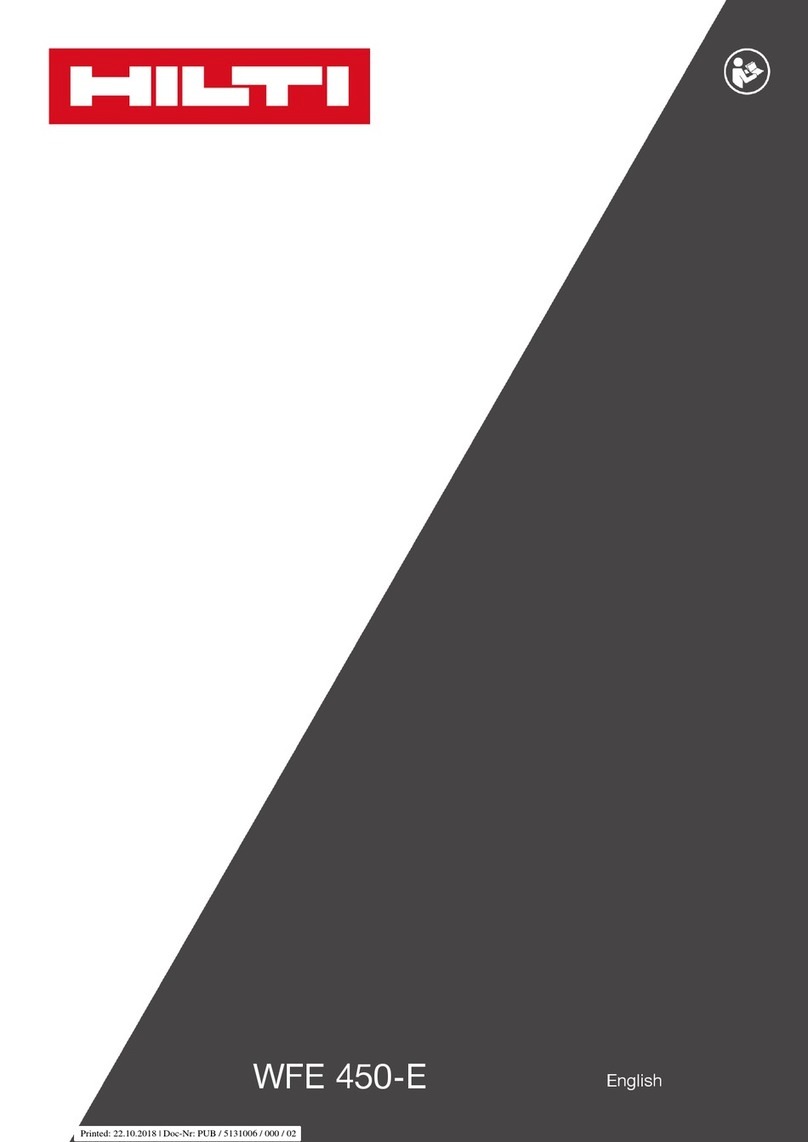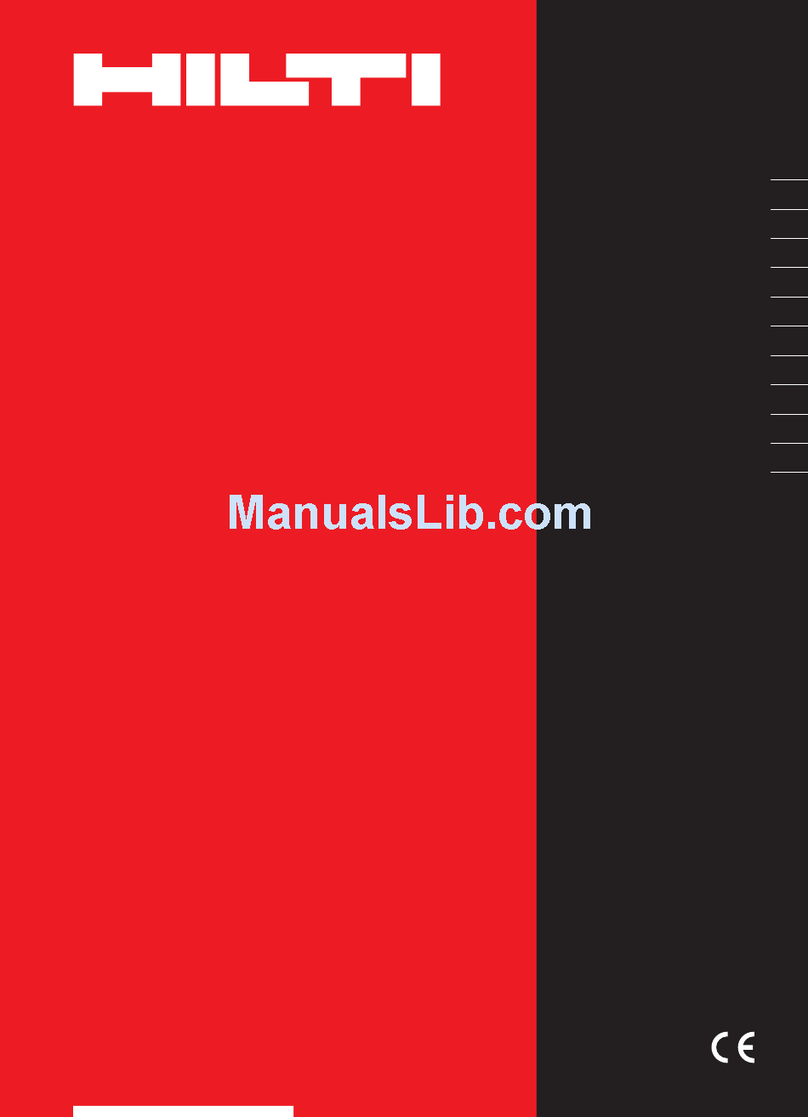
*2240962* 2240962 English 5
▶Never lay the power tool down until the accessory has come to a complete stop. The spinning
accessory may grab the surface and pull the power tool out of your control.
▶Do not run the power tool while carrying it at your side. Accidental contact with the spinning
accessory could snag your clothing, pulling the accessory into your body.
▶Regularly clean the power tool’s air vents. The motor’s fan will draw the dust inside the housing and
excessive accumulation of powdered metal may cause electrical hazards.
▶Do not operate the power tool near flammable materials. Sparks could ignite these materials.
▶Do not use accessories that require liquid coolants. Using water or other liquid coolants may result
in electrocution or shock.
Kickback and related warnings
Kickback is a sudden reaction to a pinched or snagged rotating wheel, backing pad, brush or any other
accessory. Pinching or snagging causes rapid stalling of the rotating accessory which in turn causes the
uncontrolled power tool to be forced in the direction opposite of the accessory’s rotation at the point of the
binding.
For example, if an abrasive wheel is snagged or pinched by the workpiece, the edge of the wheel that is
entering into the pinch point can dig into the surface of the material causing the wheel to climb out or kick
out. The wheel may either jump toward or away from the operator, depending on direction of the wheel’s
movement at the point of pinching. Abrasive wheels may also break under these conditions.
Kickback is the result of power tool misuse and / or incorrect operating procedures or conditions and can
be avoided by taking proper precautions as given below.
▶Maintain a firm grip with both hands on the power tool and position your body and arms to allow
you to resist kickback forces. Always use auxiliary handle, if provided, for maximum control over
kickback or torque reaction during start-up. The operator can control torque reactions or kickback
forces, if proper precautions are taken.
▶Never place your hand near the rotating accessory. Accessory may kickback over your hand.
▶Do not position your body in the area where power tool will move if kickback occurs. Kickback will
propel the tool in direction opposite to the wheel’s movement at the point of snagging.
▶Use special care when working corners, sharp edges etc. Avoid bouncing and snagging the
accessory. Corners, sharp edges or bouncing have a tendency to snag the rotating accessory and
cause loss of control or kickback.
▶Do not attach a saw chain woodcarving blade, segmented diamond wheel with a peripheral gap
greater than 10 mm or toothed saw blade. Such blades create frequent kickback and loss of control.
Safety warnings specific for sanding operations:
▶Use proper sized sanding disc paper. Follow manufacturers recommendations, when selecting
sanding paper. Larger sanding paper extending too far beyond the sanding pad presents a laceration
hazard and may cause snagging, tearing of the disc or kickback.
2.3 Additional safety instructions
Personal safety
▶Do not tamper with or attempt to make alterations to the device.
▶Keep the grips dry, clean and free from oil and grease.
▶Make sure that the side handle is fitted correctly and tightened securely. Always hold the tool firmly with
both hands on the grips provided.
▶Take breaks between working and do relaxation and finger exercises to improve the blood circulation in
your fingers.
▶The power tool is not intended for use by debilitated persons who have received no special training.
▶Keep the power tool out of reach of children.
▶Do not touch rotating parts. Switch the power tool on only after it is in position at the workpiece. Touching
rotating parts, especially rotating accessory tools, can result in injury.
▶Grinding can produce hazardous grinding dust. Before starting work, check the hazard class of the dust
that will be produced by grinding operations. When working with the power tool, whenever possible use
a dust extractor with an officially approved protection class in compliance with the locally applicable dust
protection regulations.
▶Dust from materials such as lead-based paint, certain types of wood and concrete/masonry/stone
containing quartz, minerals or metal can be harmful to health. Contact with or inhalation of the dust can
cause allergic reactions and/or respiratory or other diseases among operators or bystanders. Certain
kinds of dust such as oakwood and beechwood dust are classified as carcinogenic, especially in
conjunction with additives for wood conditioning (chromate, wood preservative). Only specialists are
permitted to handle material containing asbestos. Use a dust extractor whenever possible. To
